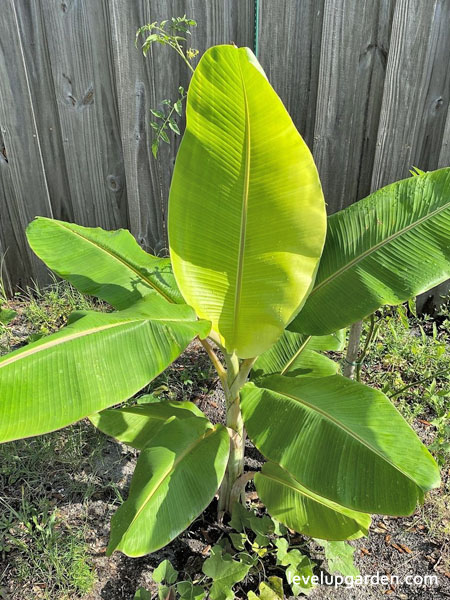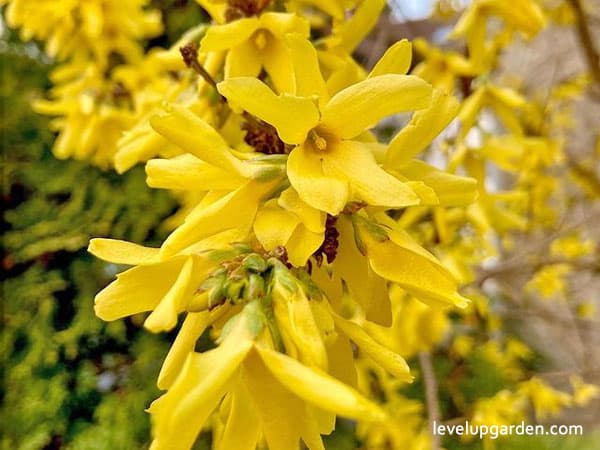Ice Cream banana (also known as blue bananas, Blue Java, Hawaiian banana, Ney Mannan, Krie, Cenizo) is a cold-resistant banana variety known for its sweet-smelling fruit that is said to have an ice cream-like consistency and vanilla-like flavor. Native to Southeast Asia, the banana is a cross between Musa balbisiana and Musa acuminata.

Ice cream banana trees are known for being fast-growing, cold tolerant, hardy, and delicious. The tree also has many leaves, a strong trunk, and a well-developed root system that gives it a tropical look and great strength, allowing it to withstand the elements. Read on to learn more about the tree.
I. Ice Cream Banana Tree Profile – An Overview of the plant
| Common Name | Ice Cream Banana Tree, Blue Bananas, Hawaiian banana, Ney Mannan, Krie, Cenizo |
| Botanical Name | Musa acuminata × balbisiana ‘Blue Java’ |
| Plant Type | Delicious tree |
| Mature Height | 10-15 ft. |
| Mature Width | 8-10 ft. |
| Sunlight | Full-Partial |
| Growth Rate | Fast |
| Hardy Zones | 4-11 patio / 8-11 outdoors |
| Origin | Southeast Asia down to Northern Australi |
II. Appearance – What do Ice Cream Banana trees look like
Blue Java banana grows to a height of 4.5 to 6 meters. It is cold hardy and, like the tall bananas of the ABB group, has strong pseudo roots and a root system that makes it wind resistant. The leaves are silvery-green in color and the flowers are red.

The clusters are small, with 7 to 9 hands. The fruit is 18-23 cm long and has a characteristic silvery-blue color when unripe. When ripe, they turn pale yellow and the flesh is whitish cream. It flowers 15-24 months after planting and can be harvested 115-150 days later.
Before ripening, the banana peel has a bluish color, hence the name “blue Java banana.” When ripe, the banana turns into a white pulp with a creamy texture and the flavor of vanilla ice cream, hence the name “ice cream banana.
II. Ice Cream Banana Tree Growing and Care Conditions
- Planting: Ice cream bananas do well in half shade, but need at least 6 hours of sunlight per day. Banana trees do not like extreme heat, which is why afternoon shade is more beneficial for the tree than morning. Avoid areas with strong winds. If kept indoors, place the banana tree near a large sunny window. After you have decided where to plant it, dig a hole twice the width of the pot and about the same depth. Place the tree in the hole, making sure it is level with the surrounding ground and that the tree stands straight. Fill the hole slowly to prevent the hole from becoming hollow, and allow the tree to drink water slowly. Finally, mulch the planting area to conserve moisture and keep grass and weeds off the tree.

- Watering: Do not over-moisten the soil. Water every 2 to 3 days in summer and every 2 to 3 weeks in winter, depending on the climate. More frequent watering is needed in warmer regions that tend to be drier. In shady areas, less water is needed.
- Sun Exposure: We encourage you to give your banana tree a sunny environment. Bananas prefer 8 to 12 hours of sunlight per day. They can tolerate partial shade, but will not grow vigorously. So make sure your bananas get enough sunlight.
- Temperature: Blue Java bananas are colder tolerant than other banana varieties. In fact, it is so cold tolerant that it can withstand temperatures up to 20 degrees Fahrenheit when wrapped. This is much lower than other banana varieties can withstand. However, it is best not to test its cold tolerance too much. This variety grows best in USDA growing zones 9-10, but can also be grown in zones 8-11. Blue java should grow well in areas where daytime temperatures range from 50-90 degrees and rarely fall below 30 degrees. It is also heat tolerant and can handle 100 degree days as long as it is well watered.
- Fertilizer: Apply a balanced organic fertilizer once a month during the growing season. The recommended amount of fertilizer is listed on the back of the package according to the size of the tree. For best results, we recommend feeding half that amount.
- Pruning: Any damaged or broken leaves that are hanging down should be removed. Once the fruit is set, trim the stalks to about 30 cm high and let the stalks dry for 1-2 weeks. When the stems are dry, remove them. This will allow new banana tree stems to grow.
- Pest and Disease: You must watch out for these common pests and diseases of Ice Cream Banana trees such as Borers, Grasshoppers, Root-knot nematode, Panama disease, Black sigatoka.
III. Ice Cream Banana Tree Uses
Blue Javas are considered one of the best-tasting bananas in the world and can be eaten fresh or cooked. The fruit is 18 to 9.1 in long and shows a characteristic silvery-blue color when unripe. When ripe, the fruit turns a pale yellow with creamy white flesh that melts in the mouth.

The fruit also goes well with ice cream. It has an aromatic flavor with a vanilla-like custard taste.
They are also popular as an ornamental shade plant because of their unusual blue and silver coloration, large size, wind tolerance, and suitability for temperate climates in zone 8 or higher. Blue/Ice Cream Bananas do very well in large containers for those in climates colder than zone 8.
Blue/ice java bananas are delicious raw or cooked.
IV. Should you buy Ice Cream Banana Trees?
Ice cream banana trees are known for being hardy and delicious. The tree is a fast-growing, cold-tolerant variety, most notably because the fruits actually taste like ice cream.

- It can grow indoors or outdoors.
- It bears fruit as early as a few seasons later.
- It is a tropical plant and is cold tolerant down to 20 degrees Celsius.
In addition, the tree’s huge leaves and sturdy trunk allow it to grow without strain. It is called the “Blue Java Banana Tree” because of its lime green leaves and bluish bananas.
Do you think this is the tree for your garden? You have your answer already.
V. FAQs
Are Ice Cream Bananas self-pollinating?
Ice cream banana trees are self-fertilizing; one tree produces fruit.
How long does Ice Cream Banana take to fruit?
d growing method, bananas generally take four to six months to reach full fruit size after flowering. The fruit usually takes on a slight yellow tinge as it matures. The color change may be so slight that it is difficult to see.
How fast does Ice Cream Banana grow?
Bananas are fast-growing, reaching a height of 20 to 40 feet in just 9 months. After about 6-8 months of growth, the plant forms a crown of pretty leaves. Then flower stalks emerge from the top and large buds begin to form.







